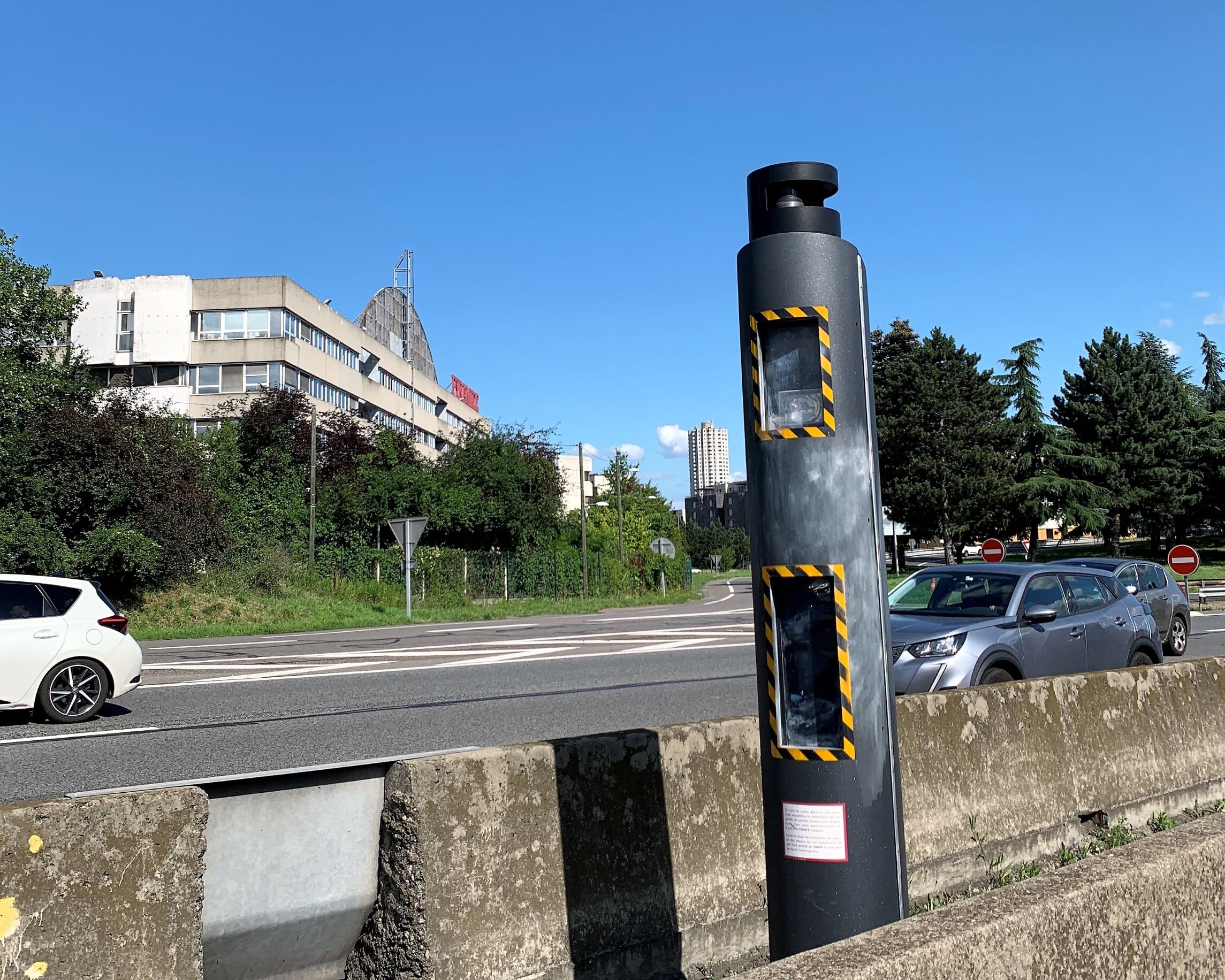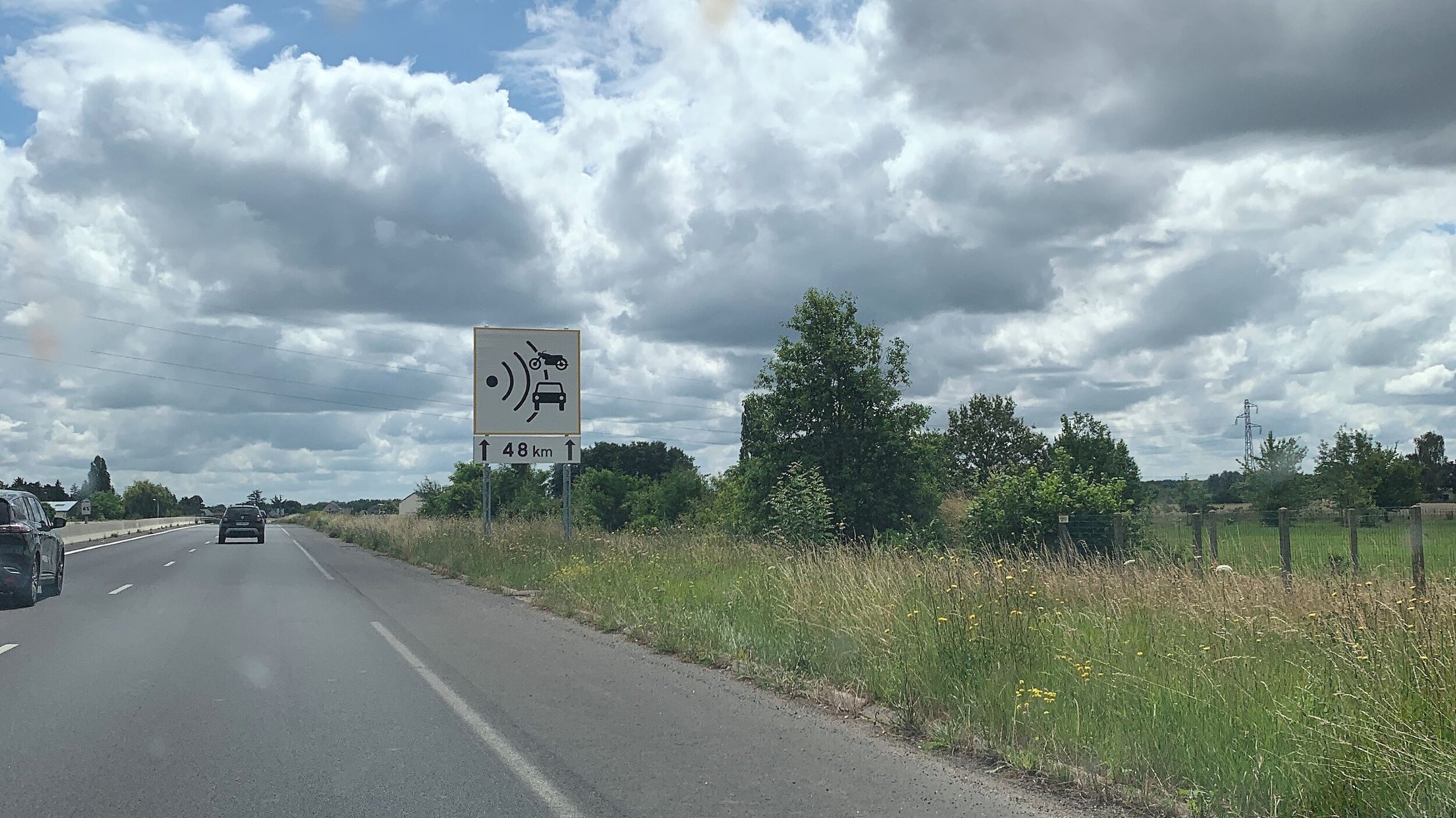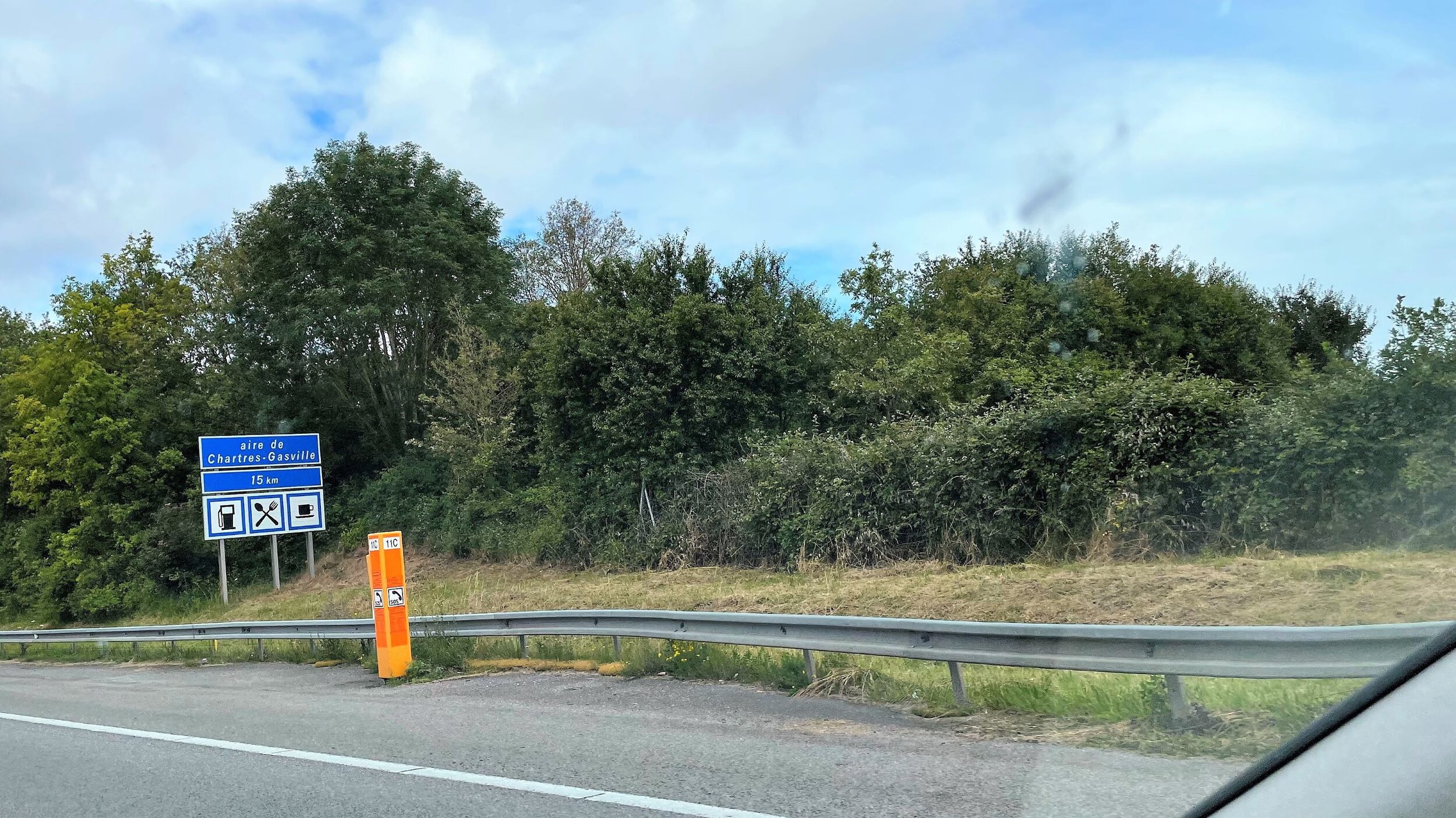Tips for Driving in France as a Tourist
Me posing at the sign to the entrance of the building at a rest stop, or péage, on an autoroute in France. You can tell which one by the name of the rest stop: This one was the Aire du Chavanon. August 3, 2021.
Intellectually, you know that France has more to see than its large cities (and especially its largest city). People tend to confuse the two, but Paris is not France.
However, tourists rarely venture beyond the major French metropolitan areas because the most efficient way to see other parts of France, especially the rural areas and small towns, is by car. And driving in a foreign country is unnerving.
When you don’t know the language, the rules of the road, and the overall highway system, driving in France can feel like a risk or a stress worth avoiding (especially on vacation).
Yet driving in France isn’t as overwhelming as it may seem. Let’s go through the key points you need to know so that you don’t feel you have to miss some of the most wonderful things in this amazing country.
(And if you need help planning a trip with a car in France, I share a few ideas in my trip-planning article full of tips and tricks.)
Renting a Car in France
You can rent a car in France in all cities and even, of course, at all major airports.
All the major car rental agencies worldwide operate in France, and you’ll find the way you rent a car very much the same: You can select your car, dates, and extras via the rental agency’s website—and, as you can choose your language via the website, you can have all the details and options clearly explained for you as you make your choices.
Your home-country auto insurance has no value in France, so don’t count on it for coverage of any kind. Also, your home-country auto insurance will not meet France’s requirement that all car rentals have at least third-party liability insurance. For this reason, car rental companies include at least the minimum legally required liability insurance in their prices.
You can add additional insurance coverage through additional rental-agency offers. Your credit card may offer additional international rental-car insurance coverage to you automatically, but you may want to check before you assume that it does and forego additional insurance that could give you the peace of mind you need to feel comfortable. On this count, everyone has a preference, and some want to have more coverage than others.
When you pick up your car, you will need to show your valid driver’s license (the same one you use at home—you don’t need a special permit to drive in France as a tourist), a credit card, and often a second form of identification (your passport will do).
Two very important notes about cars in France (and in Europe):
Europeans more often drive stick shifts than people from the United States and Canada. You may get a stick-shift vehicle as a rental unless you specify to the agency that you need or want an automatic transmission.
Many cars in France still use diesel fuel. Before you fill up your car’s tank for the first time, ensure you know what type of fuel your rental car needs.
In the United States, often you need to fill up your car to the same level of fuel it had when you received it from the rental agency. The practice on how much fuel to have in the tank when you return your rental car in France will depend on the rental agency, and you should ask for guidance when you pick up your car about how much fuel they want you to have in the tank before you return it. However, in our experience, rental agencies have always required that we return the car with a full tank of fuel. (Typically, we’ve received it with a full tank of fuel as well.)
Navigating in France
All the car rental agencies we’ve used offer the option to rent a car with GPS (often for an additional fee). Arnaud tends to prefer this option, so our rental cars often have GPS in the dashboard system.
If you rent a car with GPS, note that most rental cars in France will come with French as the default GPS language. You may want to ask the agency to change the language for you when you pick up the car—and before you leave the lot. (If you don’t know French, you won’t find trying to decipher the language plus a car-specific GPS enjoyable.)
Car-integrated GPS often don’t have the latest maps installed and rarely have insights into traffic delays and road construction, all of which might affect the best route for you to take. Even if you have a car with GPS, you may want to use your smartphone for directions as a second data point, as smartphone GPS takes these factors into account.
Your smartphone’s GPS will work just as well in France as it does in your native country, and France tends to have excellent cellular network coverage even in relatively rural areas. Just remember to ensure you have a data plan that allows you to use your smartphone in France without getting overcharged. (Some plans automatically include data in foreign countries; in other cases, you may need to pay for a temporary upcharge to cover you for your trip.)
If you have a data plan that allows you to use your smartphone’s map feature, you can forego the car-integrated GPS via the rental agency. Most cars today have USB jacks that allow you to connect your smartphone while you drive for audio and for charging.
Types of Roads in France
France has three types of routes that lead between cities, towns, and areas:
Autoroute: In the United States, we call these “interstates” or “freeways.” Autoroutes have the most lanes and the highest allowed speeds. France demarcates an autoroute through putting an “A” before the number of the road (e.g., A11) and using blue signs on these roads. In most cases, you must pay to use an autoroute via periodic tolls at “peages.” (See below for more details on how peages work.)
Nationale: In the United States, we would call these roads “highways”—one step down from an interstate, with fewer lanes and lower maximum speeds. France indicates a nationale through adding a “N” before the number of the road (e.g., N10) and coloring the directional signs green. Nationales are rarely toll roads.
Departmentale: Departmentales typically have only two lanes, one in each direction. These roads have the lowest maximum rate of speed and typically wind through the small towns and rural areas. They have white signs to provide navigational cues and the road number has a “D” before it (e.g., D453). You never need to pay to use a departmentale.
For all types of roads, you can find the speed limit posted on the right side of the route in a round white sign bordered in red with a black number within it.
Speed limit sign in France. The word “rappel” below it—not always present—means “reminder.” July 9, 2021.
Choosing Your Road in France
Deciding whether to take a toll road in France or whether to follow a free route depends on several factors.
If part of the reason you’ve rented a car in France is to see the French countryside, you should take as many departmentale roads as possible, peppering in a few nationales as necessary. As with interstates in the United States, the autoroutes will toss you onto a concrete river that shows you nothing much of interest—but gets you to where you want to go quickly.
Personally, I think you miss some of the incredible beauty, variety, and culture of France if you take only autoroutes to traverse it. The road trips for which we’ve used the departmentales and nationales have universally given us the best stories via the sights we’ve seen, the food we’ve eaten, and the people we’ve met.
However, a trip that could take you two or three hours using an autoroute for most of the trajectory can take you twice as long via departmentales and nationales. If you don’t want to spend a full day in the car—or multiple days in the car—or if you need to move quickly for any reason, you should take the autoroute. Just keep in mind that autoroutes usually involve tolls—and that the tolls can cost around 5 to 10 Euro per hour of drive time, which adds up quickly.
Therefore, I’d recommend a mix of the two: Use the departmentale roads when you have the time and the area of the country holds a lot of interest for you. Use the autoroutes when you want to move quickly from one part of the country to another and the destination—not the road trip—has priority.
The Rules of the Road in France
No matter what type of road you use, the same road rules apply in France.
Although more road rules exist than I can reasonably enumerate here, highlighting a few of the biggest questions will help you feel more confident (and keep you driving legally) while on the road in France:
You’ll rarely find traffic lights strung above intersections, as you see in some U.S. cities, but instead on the right or left side of the road (or both). However, they work just as they do in the United States: Via green, yellow, and red lights. In France, you can enter an intersection on a yellow light, just as you do in the United States. However, you cannot turn right on a red unless you see a flashing orange arrow next to the traffic light that points to the right.
Intersections without lights might be a four-way crossing or a roundabout. In roundabouts, the people in the circle have the right of way and will signal when they exit (just as you do and should). At four-way intersections, note that you’ll rarely see stop signs for both roads; you’ll more likely see yield signs for one road and not the other. If you do not see any sign at a four-way intersection, the car on the right has right of way (and may not even stop at the intersection, so beware).
The “priority on the right” rule applies to all roads in France, from small local routes through to large autoroutes. The car on the right always has priority and the car on the left should always cede the right of way and yield, even at intersections.
On highways and freeways, the left-most lane is the fast lane, and you should never pass on the right-hand side of another car.
See? While a few road rules differ in France, you won’t feel like you’ve landed on a different planet.
What to Know about French Speed Traps and Speeding Tickets
In most cases, the French catch drivers for speed violations through speed-trap cameras, rather than via traffic cops pulling drivers to the side of the road to dole out tickets (although that can happen).
French speed-trap cameras take multiple shapes and forms. While you’ll usually get a warning about a speed trap ahead via a sign several meters before the speed camera, these signs easily get lost in the road’s visual noise.
To prove my point (and give you an idea of how these cameras look), I snapped a few example photos of speed-trap cameras in France, taken on a recent road trip:
Also, I captured a few photos of the warning signs you might see before the camera catches you speeding:
If you get caught over the speed by a speed-trap camera, your car’s rental agency will receive the ticket and will tell the French government where to find you to administer the fine. Also, the rental agency will charge an administrative fee to the credit card they have on file for you as compensation for their time and trouble.
In short: Just avoid speeding, which solves the speed-trap, ticket, and fine problem.
French Toll Roads: What to Know
If you’ve decided to take an autoroute, you’ve decided to pay for a quicker trip. French toll roads have the highest rate of maximum speed, multiple lanes, and few entrances and exits, to help people get where they want to go as quickly and as efficiently as possible.
Along an autoroute, other than the occasional exit and entrance, you’ll find only two things: Toll booths (called “peages” in French) and rest stops (called “aires” in French).
Each “aire,” or rest stop, has a name. You’ll receive warning of it several kilometers in advance. Aires in France typically have grassy, shaded picnic areas with numerous tables; several lanes for car fueling; extensive bathrooms (surprisingly always mostly clean); a food court with multiple dining options; and a convenience store with drinks, supplies, candy and snacks, toys and games, and gift items.
Blue sign advertising an “aire” or rest stop ahead on the autoroute. July 4, 2021.
A “péage,” or toll booth, has kiosks with machines via which you can either receive a ticket demarcating your entrance, via which you will pay later at another péage, or a payment machine, which either takes your ticket and tells you how much you owe or gives you a flat fee to pay for the segment of road you’ve driven.
If you do not have a tag on your car that deducts tolls from your account as you use the roads—most French drivers will have these tags, but most tourists will not—you will want to use the péage kiosks that have a blue electronic sign at the top with a graphic displaying coins and a card. Kiosks marked solely with an italic T on the blue electronic sign take toll tags only.
Image of a peage, or toll booth, on the return to Switzerland from France. You can see the signs showing the toll-tag only booths, with the italic T, and the signs indicating the booths for cash and credit payment. July 11, 2021.
When paying at a péage kiosk machine (you will not find human toll attendants—to pay a human, you will need to pull to the side, get out of your car, and enter a separate building)—you will either use Euro coins and bills or you may use a credit card (other than American Express) that has an electronic chip.
Important note: French péages do not take credit cards that only have magnetic swipe strips. If you only have a card with a swipe strip, you will need to pull over and go into the péage office building to the side of the péage.
The Great French Road Trip
On any road in France, you’ll see large brown signs to the right of the road, usually with interesting drawings or illustrations. These signs alert you to the area’s historical sites.
A brown sign promoting a point of interest in the area around this part of this autoroute in France. August 3, 2021.
If something intrigues you, get off the road, look it up on your phone or in your guidebook, and explore. Such is the joy of a road trip, after all!
Though driving in a foreign country may seem intimidating, you’ll discover so much more in France if you leave the big cities and see a bit of the rest of the richness the country has to offer.
Road Trip Ideas for France
Would you love to take a road trip through France, but have gotten stuck on where to go and what to do? Once you get started, you’ll discover endless possibilities, trust me.
However, if you need ideas to jump start your planning, check out these ideas and suggestions for great road trips in different parts of France:
Go for it. I look forward to your French road-trip stories!
Final note: If you found this post helpful in planning your trip, please hat tip me a coffee!










